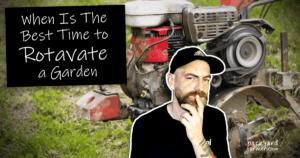Table of contents
- Introduction: Advanced Tips for Using LED Grow Lights
- Optimizing Light Cycles for Advanced Growth
- Precise Light Intensity Adjustments
- Advanced Placement and Hanging Solutions
- Leveraging High-Tech Accessories
- Troubleshooting and Fine-Tuning Tips
- Recommended Premium Grow Lights
- Conclusion: Bringing It All Together
- FAQ: Top Questions About Using Advanced LED Grow Lights
Introduction: Advanced Tips for Using LED Grow Lights
These advanced LED grow light tips will help you maximize light efficiency and ensure your plants thrive at every stage. LED grow lights are revolutionizing indoor gardening, offering precision, efficiency, and control. For advanced growers, mastering their full potential involves leveraging cutting-edge tools and strategies.
This guide will cover:
- Automating light cycles with smart systems.
- Fine-tuning light placement using adjustable kits.
- Using advanced techniques to optimize plant growth and energy efficiency.
Whether you’re growing leafy greens, fruiting plants, or ornamentals, these advanced tips will help you achieve exceptional results. To help you choose the best setup while applying these advanced tips, check out our full guide on the best LED grow lights for indoor gardens.
Optimizing Light Cycles for Advanced Growth
Achieving optimal plant growth begins with mastering light cycles. The right balance of light and dark periods can significantly impact flowering, fruiting, and overall plant health.
Why Light Cycles Matter
- Plants rely on light cycles to regulate their growth stages (e.g., vegetative or flowering).
- Different plants have unique photoperiod requirements, such as short-day or long-day cycles.
Advanced Tools for Light Cycle Automation
To streamline and perfect light management, consider using smart garden systems that automate light cycles. These systems allow you to:
- Set precise schedules remotely via smartphone apps.
- Monitor light intensity and adjust based on plant needs.
- Sync lighting with other environmental controls, like humidity and temperature.
If you’re unsure about PAR and PPFD, start with our LED Grow Light Basics guide, then compare models in our 4×4 or indoor garden light reviews.
Recommended Tools:
- Smart Controllers: Devices like the AC Infinity Controller 69 offer seamless scheduling and real-time monitoring.
- Smart Plugs: Use programmable plugs to control LED light operation effortlessly.
By automating light cycles, you can ensure your plants receive the ideal amount of light for their growth phase—without constant manual intervention.
Precise Light Intensity Adjustments
Fine-tuning light intensity is essential for advanced growers who want to optimize plant growth and avoid issues like light burn or insufficient lighting. Understanding how to measure and adjust light levels ensures your plants thrive at every stage.
Importance of Light Intensity
- Seedlings and young plants require lower light intensity to prevent stress.
- Mature plants need higher intensity to support flowering and fruiting.
- Maintaining the correct intensity ensures photosynthesis occurs at peak efficiency.
Tools for Measuring and Adjusting Light Intensity
Advanced growers can use specialized tools to monitor and control light levels:
- PAR Meters: These devices measure photosynthetically active radiation (PAR), ensuring your plants receive optimal light in their growth zone.
- Dimmable LED Grow Lights: Modern LED lights often include dimming options, allowing precise adjustments without moving the fixture.
Recommended Tools:
- HydroFarm Quantum PAR Meter – Perfect for assessing light distribution across the canopy.
- Apogee Instruments MQ-500 – A professional-grade PAR meter for serious growers.
Pro Tip:
Position your lights closer to the canopy during flowering stages to increase intensity but keep a safe distance to avoid heat stress or light burn.
With precise light intensity adjustments, you can unlock your plants’ full potential and maximize yields. For more strategies to get the most from your setup, see our guide on how to maximize your yields.
Advanced Placement and Hanging Solutions
Proper placement of LED grow lights ensures even light distribution and prevents issues like shading or light burn. Advanced growers can maximize their lighting setup by using innovative hanging solutions and strategic placement techniques.
Importance of Proper Light Placement
- Uniform Canopy Coverage: Ensures all plants receive adequate light for balanced growth.
- Minimizing Hotspots: Prevents areas of excessive heat or light intensity.
- Dynamic Adjustments: Accommodates growth stages as plants increase in height.
Tools for Adjusting Placement
Advanced hanging kits and placement tools allow growers to adapt to their plants’ changing needs:
- Adjustable Height Hanging Kits: These systems enable easy height modifications, ensuring lights are always at the optimal distance from the canopy.
- Light Movers: Motorized systems that move lights across the grow area for even coverage.
Ideal Distance Guidelines (Table Example):
| Plant Stage | Recommended Distance (LED Grow Lights) |
| Seedlings | 24-36 inches |
| Vegetative Growth | 18-24 inches |
| Flowering/Fruiting | 12-18 inches |
Recommended Products:
- iPower Adjustable Rope Hanger – Reliable and easy-to-use for height adjustments.
- Light Rail 4.0 Adjust-a-Drive Kit – A motorized system for consistent light coverage.
By utilizing adjustable kits and advanced placement tools, you’ll ensure your plants receive uniform light exposure, leading to healthier growth and higher yields. By following these advanced LED grow light tips, you can fine-tune your setup for precision and higher yields.
Leveraging High-Tech Accessories
Advanced growers can enhance their setups with high-tech accessories that simplify operations and improve efficiency. These tools not only save time but also create a controlled environment for optimal plant growth.
Must-Have Accessories for Advanced Growers
- Smart Plugs and Timers
- Automate on/off schedules for grow lights and other devices.
- Monitor energy consumption remotely.
- Example: Kasa Smart Wi-Fi Plug Mini – Allows precise scheduling via a mobile app.
- Energy Monitors
- Track the power usage of your LED grow lights.
- Optimize energy efficiency and reduce costs.
- Example: Emporia Smart Energy Monitor – Provides real-time energy tracking.
- Environmental Controllers
- Manage temperature, humidity, and CO₂ levels alongside lighting.
- Ensure an ideal growing environment.
- Example: Inkbird ITC-608T Thermostat and Humidity Controller – A versatile tool for multi-environment control.
Benefits of Using High-Tech Accessories
- Efficiency: Save time with automation and remote management.
- Energy Savings: Reduce energy waste with smart monitoring.
- Better Control: Fine-tune environmental factors for consistent plant health.
Example Workflow:
- Use a smart plug to schedule light cycles.
- Pair it with an energy monitor to track electricity usage.
- Integrate an environmental controller to maintain optimal growing conditions.
By incorporating these high-tech tools into your setup, you’ll not only improve your plants’ performance but also streamline your gardening routine.
Troubleshooting and Fine-Tuning Tips
Even with advanced tools and techniques, challenges can arise. Understanding how to troubleshoot common issues and fine-tune your setup is essential for maintaining a high-performing grow environment.
Common LED Grow Light Issues and Solutions
| Problem | Cause | Solution |
| Light Burn | Lights too close to plants | Increase the distance between lights and canopy. |
| Uneven Light Distribution | Poor light placement | Adjust placement or use light movers. |
| Inadequate Light Intensity | Underpowered lights for plant stage | Upgrade to high-intensity LED grow lights. |
| Excessive Heat | Poor ventilation or high wattage lights | Use cooling fans or ensure proper airflow. |
| Stunted Plant Growth | Incorrect photoperiod or low intensity | Reevaluate light cycle and intensity. |
Advanced Tools for Troubleshooting
- Infrared Thermometers: Monitor leaf surface temperature to detect potential heat stress.
- Smart Environmental Monitors: Tools like the Govee Smart Hygrometer provide real-time data on temperature and humidity.
Fine-Tuning Your Setup
- Adjust light height and intensity regularly to match plant growth stages.
- Monitor environmental factors such as temperature, humidity, and airflow.
- Perform routine equipment maintenance, including cleaning LED panels and inspecting hanging kits.
Pro Tip:
Keep a grow journal to record changes in light settings and environmental factors. This helps identify patterns and optimize future setups.
With these troubleshooting and fine-tuning strategies, you can overcome challenges and ensure consistent success in your advanced grow setup.
Recommended Premium Grow Lights
Selecting the right grow lights is crucial for advanced setups. Premium LED grow lights offer higher efficiency, superior performance, and customizable features tailored to the needs of experienced growers.
Why Choose Premium Grow Lights?
- Better Spectrum Control: Advanced lights allow fine-tuning of light spectrums to match plant growth stages.
- Higher Energy Efficiency: Premium models provide more light output per watt, reducing electricity costs.
- Longer Lifespan: High-quality materials ensure durability and consistent performance over time.
Top Premium LED Grow Lights
| Grow Light | Best For | Key Features |
| Spider Farmer SF-4000 | Large grow areas | Full-spectrum, dimmable, high PAR output. |
| Mars Hydro FC-E6500 | Advanced growers with space | Adjustable spectrum, energy-efficient design. |
| Viparspectra XS2000 | Smaller setups | Compact, high efficiency, budget-friendly. |
How to Choose the Right Light
- Consider Your Grow Area: Match light coverage to the size of your space.
- Think About Plant Needs: Fruiting plants require higher intensity compared to leafy greens.
- Budget Smartly: Invest in lights that balance cost with advanced features.
Looking for the best LED grow lights to complement these advanced tips? Check out our guide to the Best LED Grow Lights for Indoor Gardens in 2024 for top recommendations.
Pro Tip:
Pair your premium grow lights with adjustable hanging kits and smart controllers to unlock their full potential.
With these top-tier recommendations, you’ll be equipped to achieve exceptional results in your advanced growing environment.
Conclusion: Bringing It All Together
Advanced growers know that success comes from attention to detail and leveraging the best tools available. By incorporating the tips and techniques covered in this guide, you can take your indoor gardening setup to the next level. Incorporating these advanced LED grow light tips into your routine guarantees better control and exceptional results for your indoor garden.
Recap of Key Takeaways:
- Optimize Light Cycles: Use smart garden systems to automate schedules for precise plant growth.
- Fine-Tune Intensity: Measure and adjust light levels with PAR meters and dimmable LEDs.
- Perfect Placement: Ensure even light distribution with adjustable hanging kits and light movers.
- Use High-Tech Accessories: Smart plugs, energy monitors, and environmental controllers simplify operations.
- Troubleshoot Effectively: Stay ahead of issues like light burn or uneven distribution.
- Choose Premium Lights: Invest in high-quality LED grow lights for superior performance.
With these advanced strategies, your plants will thrive, and your indoor gardening skills will reach professional heights. For more insights, explore other articles in this series or check out recommended tools and products to elevate your setup.
Call to Action:
Start implementing these advanced tips today, and watch your garden flourish. For additional resources, explore our product recommendations or browse related guides to continue refining your skills.
FAQ: Top Questions About Using Advanced LED Grow Lights
1. How do I determine the right distance between my LED grow lights and plants?
The distance depends on the plant’s growth stage and the light’s intensity.
- Seedlings: 24–36 inches.
- Vegetative Stage: 18–24 inches.
- Flowering Stage: 12–18 inches.
Use a PAR meter to ensure your plants receive the optimal light intensity without causing stress.
2. What is the best way to automate my grow lights?
Smart garden systems and programmable smart plugs are excellent tools for automating your light cycles. These devices allow you to:
- Set precise on/off schedules.
- Adjust light intensity remotely.
- Sync lighting with environmental factors for optimal growth.
3. How can I prevent light burn on my plants?
Light burn occurs when lights are too close or too intense. To avoid this:
- Maintain appropriate distances based on the plant stage.
- Gradually increase light intensity as plants mature.
- Use dimmable LED grow lights to control output.
4. What are the advantages of using premium LED grow lights?
Premium LED grow lights offer:
- Enhanced energy efficiency, saving on electricity costs.
- Full-spectrum capabilities for better plant growth.
- Durable designs for long-term use.
These lights are ideal for advanced growers looking for reliable, high-performance equipment.
5. How do I troubleshoot uneven light distribution?
Uneven light can lead to poor growth in some areas of your grow space. To fix this:
- Use light movers to ensure even coverage.
- Adjust light placement and height regularly.
- Add reflective materials to maximize light disper





